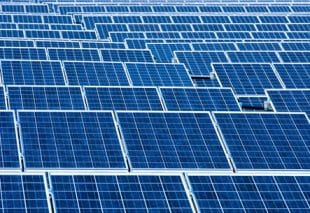Solar energy is fast becoming a ‘least-cost’ option for U.S. utilities. Declining technology costs, policy support and retail rate levels are cited as contributing factors. Issues, including rate restructuring and grid integration, need to be addressed; meanwhile, community solar programs are garnering strong interest.
In its latest Utility Solar Market Snapshot, the U.S. Solar Electric Power Association (SEPA) reports that solar energy is growing increasingly attractive for utilities. Overall, the top ten utilities accounted for 72% of all new installations in the U.S. in 2014, which is estimated to total around 5.3 GW (AC) across 183,00 systems.
Leading this charge are falling power purchase agreement (PPA) prices, sometimes under those seen in the natural gas market, meaning new U.S. markets are opening up for solar. States with higher solar insolation are also said to be experiencing prices competitive with those of natural gas.
Favorable energy policies are further softening utilities up to solar, including renewable portfolio standards (RPS), state tax credits and the tradable solar renewable energy credits (SRECS).
Innovation is coming to the fore in terms of a utility’s approach to solar development. For instance, four utilities have launched pilot rooftop solar ownership programs, which are targeted at the residential market. These programs will see residential owners hosting solar on their rooftops, while the utility oversees the financing, maintenance and risk management aspects.
Community solar is becoming a watchword, with SEPA reporting that 15 utilities not considering community programs previously were doing so in 2014; a further six have actually implemented them. Overall, SEPA reports that at least 93 programs are active in the U.S., 77 of which are utility managed.
Rate restructuring
According to the utility rankings, Pacific Gas and Electric installed the most solar in 2014, at 1.68 GW, followed by Southern California Edison at 1.04 GW: these two Californian-based utilities accounted for 48% of total installed capacity by utilities last year. Claiming four of the top ten spots, utilities in California are by far the most active in the field of solar, although those in Arizona, North Carolina, Hawaii and New Jersey have been noticeably active too.
While solar – specifically photovoltaics – is continuing its onward march, several business issues have been identified as key for the next two to three years. Namely, rate restructuring and new approaches to grid integration.
Regarding rate restructuring, SEPA states it will continue to be a “point of friction between utilities and distributed solar.” Net energy metering (NEM) in particular has divided many, with complaints arising that it is effectively “a subsidy for customers with solar generators by those without.” Currently, NEM is applied to 99% of all U.S. solar installations.
In response, some utilities are said to be contemplating restructuring rates – particularly when feed-in tariffs are included – such as fixed customer charges or higher rates for solar customers. “Others, driven largely by state policies – such as in New York and California – have decoupled revenues from volumetric energy sales.”
Utilities in locations where a high level of distributed solar is present, like Hawaii, California and New Jersey, have been focussing their energies on new grid integration strategies. “Advanced inverter functionality, energy storage, and solar energy production forecasting are the leading strategies on the supply side; while demand response and locational deployment provide some solutions on the customer side of the meter,” explains SEPA.
Installation boom
SEPA estimates that 5.3 GW (AC) of solar was added in the U.S. in 2014. Of this, residential systems are said to account for 36%, non-residential 12% and utility-scale (projects over five MW) 23%. It adds, “Solar costs are declining with an industry wide drive to lower non hardware soft costs in areas such as financing and customer acquisition.”
While utility-scale projects account for the lion’s share of installations, residential projects are becoming increasingly attractive on the back of falling technology costs, and federal and state incentives. Third party development is spurring this growth.
In the utility-scale market, growth is expected to be maintained over the next two years. A “very sharp” decline is forecast, however, when the federal investment tax credit steps down in 2017.
Read the full SEPA report.
Read more: http://www.pv-magazine.com/news/details/beitrag/solar-becoming-least-cost-option-for-us-utilities_100019329/#ixzz3ZJNVJEp8








